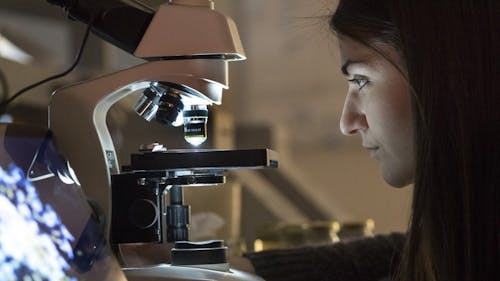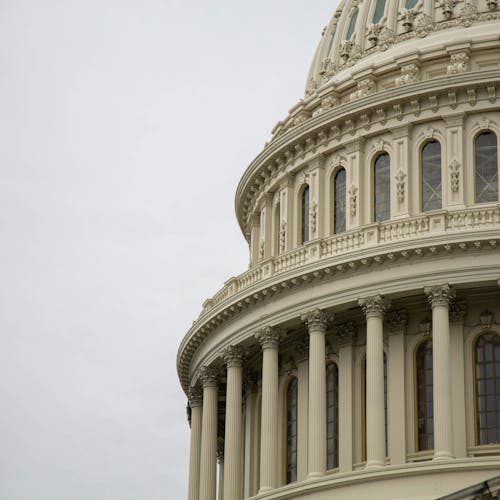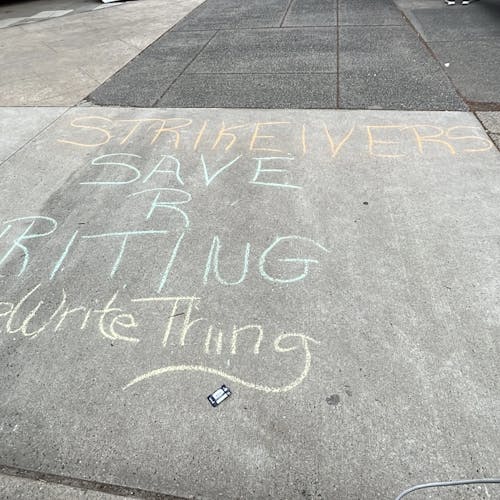Rutgers student working with NASA on research of red algae, how it explains life on Earth

Julia Van Etten, a doctoral candidate in the Graduate Program in Ecology and Evolution, is currently working with NASA on a research project that investigates how red algae can help explain early life on Earth. Van Etten works closely with her advisor, Dr. Debashish Bhattacharya, distinguished professor in the Department of Biochemistry and Microbiology, and his team.
In addition to her studies in red algae, Van Etten also runs a popular Instagram account highlighting the art of microorganisms through photography. The account, @Couch_Microscopy, was started in July 2017 and now has more than 25,000 followers. Van Etten said she created the account as a hobby that combined her interests in art and science.
Van Etten began the doctoral program with the Bhattacharya team at Rutgers in 2016. The team is one of the leading research groups who study the origin and evolution of red algae and has worked on this research for more than 20 years, Bhattacharya said.
“(Van Etten) has been a very committed and hard-working student,” Bhattacharya said. “She led the development of a teaching module in the (Department of) Biochemistry and Microbiology that uses her microscopy skills to introduce students to protists and algae. Her love of algae and skills in culturing them helps her maintain the species used for research.”
Red algae are so important to study due to their ability to tell scientists about the origins of life on Earth, Van Etten said. Bhattacharya said they are the oldest living photosynthetic eukaryotes, providing insights into how photosynthesis has evolved on Earth.
“Not only are they an ancient lineage of organisms, but this particular group of red algae, called the Cyanidiales, (also) lives in extreme environments,” Van Etten said, “This means that they can thrive under conditions that most organisms cannot, like living in a hot, acidic environment and among toxic heavy metals.”
Van Etten said this trait is due to an ability called “gene sharing” or horizontal gene transfer. The red algae are able to “steal” genes from other microbes that are around by including the genes into their own genomes. She said gene sharing does not often occur in more complex organisms like algae, so this is another reason scientists are drawn to them.
“Studying how they survive and evolve gives us insights into possible processes going on when life first evolved on Earth, and understanding these processes could even help us study life on other planets in the future,” Van Etten said.
Specifically, the project provides an in-depth look at what functions red algae steal from other microbes, how these functions are joined into the algae’s metabolism, what role they play in the algae’s adaptation into harsh environments and how these events could have happened on early Earth, Bhattacharya said.
In 2019, Van Etten’s dedication to her studies was recognized by NASA. She said she received a grant from the Future Investigators in NASA Earth and Space Science and Technology program that will fund her research in red algae for three years.
The funds from the grant are used to pay for her salary, fieldwork and conference travel to present findings, the equipment needed to grow and sustain the algae and for experiments like DNA and RNA sequencing, Van Etten said.
“Applying for a grant or fellowship as a (graduate) student is a lot of hard work ... so being selected as a NASA Future Investigator is a really great opportunity,” she said. “There are many more qualified graduate students out there than external funding opportunities.”
Although most of her work is done in the Bhattacharya lab at Rutgers, Van Etten said she does get to work with one of NASA’s scientists.
“I collaborate with a scientist at NASA Ames Research Center in Silicon Valley and will be doing some fieldwork with her and visiting that NASA facility at some point during the three years of this project,” Van Etten said. “I’m very thankful to be working on a project that I care so much about.”



